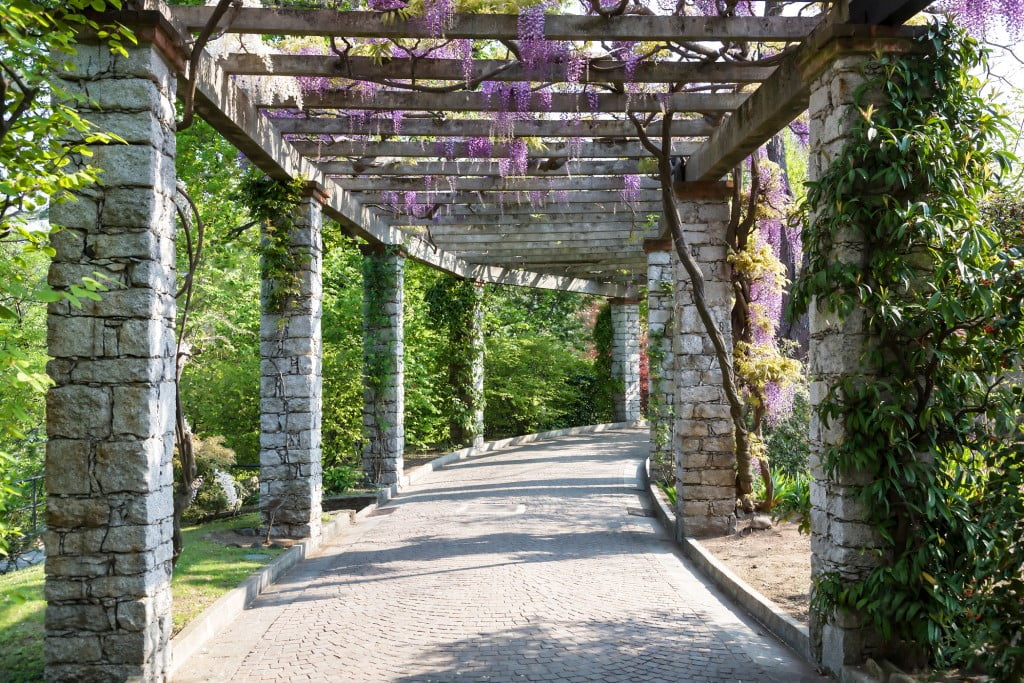 The same golden rule for selecting garden plants, trees and shrubs also holds true for vining plants: Choose the best plant for the space. Vining plants can be diminutive and comfortably grow in a large patio container, or they can be massive and require the strength and longevity of support that can only be provided by a solidly built structure like a pergola. To select the best vine for your space, consider the following tips:
The same golden rule for selecting garden plants, trees and shrubs also holds true for vining plants: Choose the best plant for the space. Vining plants can be diminutive and comfortably grow in a large patio container, or they can be massive and require the strength and longevity of support that can only be provided by a solidly built structure like a pergola. To select the best vine for your space, consider the following tips:
1. Assess the size of the space you have dedicated to a vining plant. Now compare that to the vine’s mature size. A 10-foot vine will be nearly impossible to keep wrangled in a space more appropriate for a 5-foot annual vine.
2. Is the vine an annual or tender perennial or a long-lived woody vine? Long–lived woody vines, like wisteria, can be cut back hard from time to time, but the base of the plant will always be large and it will require ample room to grow and a structure sturdy enough to support it. Ideally, some vines are best left to grow to their potential massive size—such as wisteria.
3. Neighboring trees and shrubs. Large vines will grab onto anything, including neighboring trees and shrubs. To avoid constant trimming, choose a vine that will not grow to a length to reach nearby trees and shrubs.
4. Annual vines are great for tucking into small garden spaces and even on patios and decks. However, even annual vines, which are usually much shorter, can weave their way around neighboring plants. If you like the look of morning glories or black-eyed Susan vines intermingling with neighboring plants, great. If you prefer a more restrained look to the garden, consider planting annual vines in decorative containers set in the garden. Provide a structure for the vine to climb and keep an eye out for tendrils reaching out and down the side of the container.
5. Which brings us to maintenance and accessibility. There is a wisteria in the park’s volunteer gardens that needs regular trimming—it is a bit large for its space and tends to reach for to the neighboring holly tree (wrong plant for the space!). However, I can easily reach its long, slender tendrils from the sidewalk or the path in the neighboring garden plot. It is not unmanageable. If a vine requires pinching, trimming or cutting back in the late fall, make certain you can easily reach the plant. Chances are, if it is a struggle to reach the plant, you will not maintain it.








